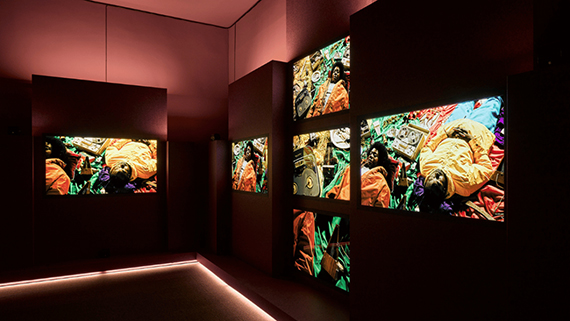
John Akomfrah »
Listening All Night To The Rain
Exhibition: 20 Apr – 24 Nov 2024
Venice Biennale - GREAT BRITAIN
Giardini
30124 Venezia
+39-41-2728397
Exploring post-colonialism, environmental devastation and the politics of aesthetics, Listening All Night To The Rain is Akomfrah’s boldest and most ambitious commission to date.
The exhibition draws its title from 11th century Chinese writer and artist Su Dongpo’s poetry, which explores the transitory nature of life during a period of political exile. Organised in a series of song-like movements, or ‘cantos’, the exhibition brings together eight interlocking and overlapping multimedia and sound installations into a single and immersive environment that tells stories of migrant diasporas in Britain. It is the result of decades of extensive research by the artist and his team, using historical records to contextualise our experience of the present day.
Listening All Night To The Rain weaves together newly filmed material, archive video footage and still images, with audio and text from international archives and libraries. The exhibition tells global stories through the ‘memories’ of people who represent migrant communities in Britain and examines how multiple geopolitical narratives are reflected in the experiences of diasporic people more broadly.
Each gallery space layers together a specific colour field, influenced by the paintings of American artist Mark Rothko, in order to highlight the ways in which abstraction can represent the fundamental nature of human drama.
Listening All Night To The Rain positions various theories of acoustemology: the study of how the sonic experience mirrors and shapes our cultural realities. Akomfrah draws on an acute acoustic sensitivity influenced by a variety of formative experiences, from protests to club culture in 1970s-80s London. Each of Akomfrah’s ‘cantos’ is accompanied by a specific soundtrack, which layers archival material with field recordings, speeches and popular and devotional music. Extending the sense of hybridity in the filmic collages, Akomfrah’s use of sound encourages us to consider the breadth of cultural identity in Britain more broadly.